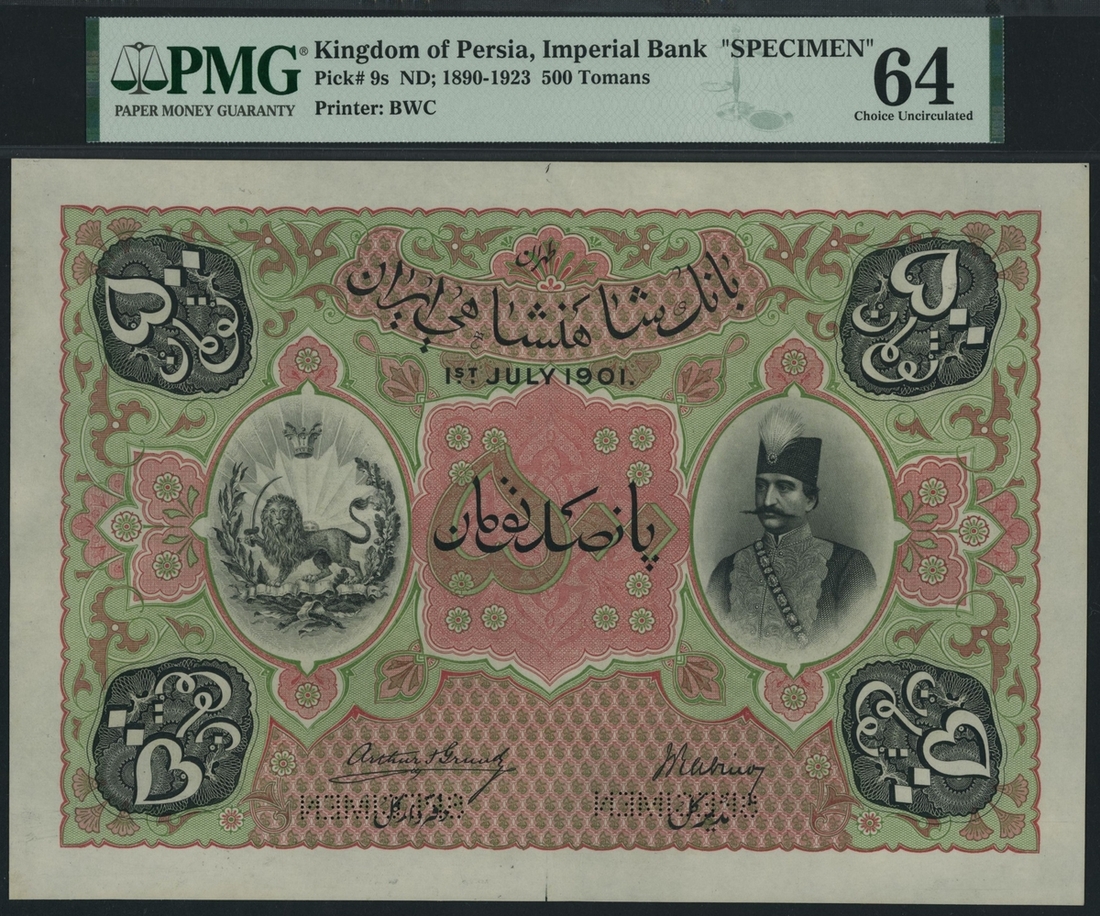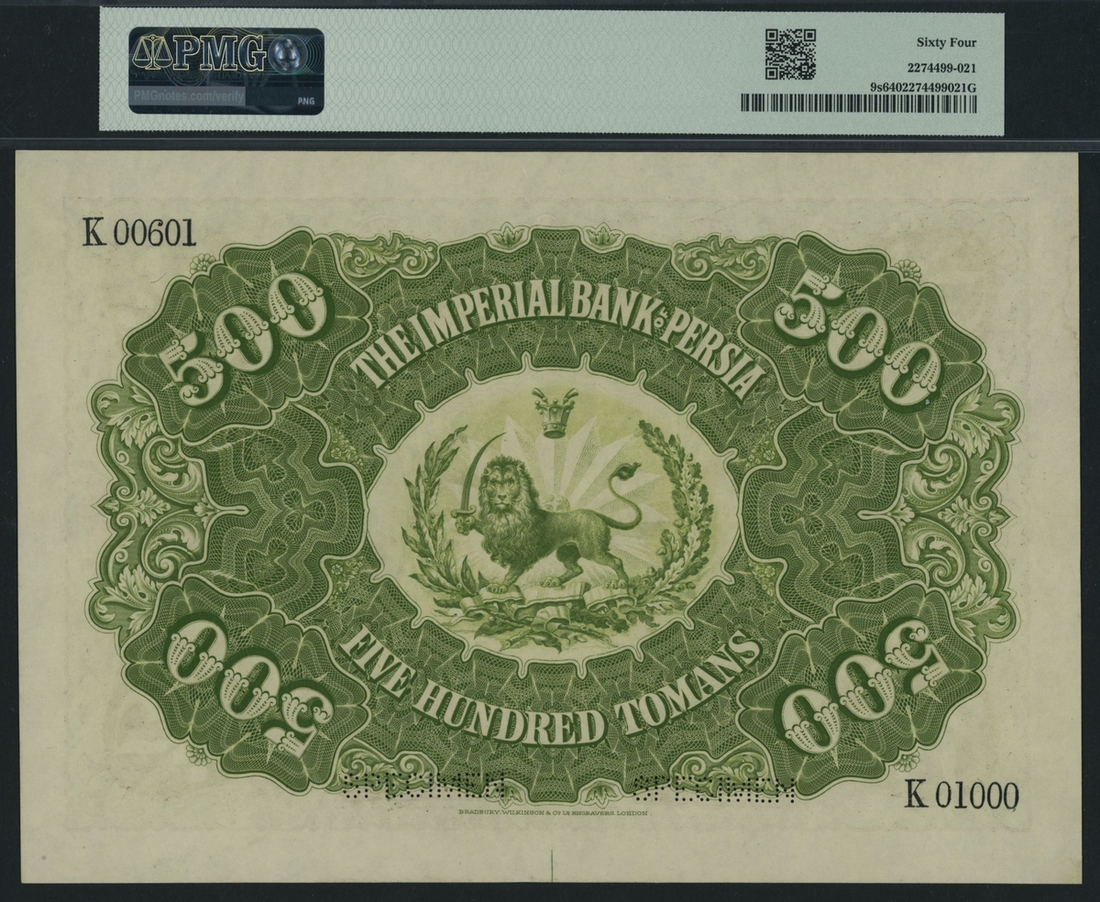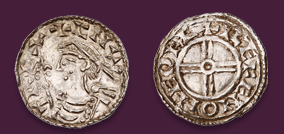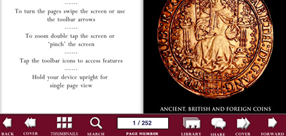Auction: 25360 - The 360th Anniversary Sale
Lot: 40
A SPECIMEN 500 TOMANS FROM THE IMPERIAL BANK OF PERSIA
PMG 64 Choice Uncirculated | Imperial Bank of Persia, Specimen 500 Tomans, ND (1890-1923), serial number range K 00601-01000, This note, printed by Bradbury, Wilkinson & Co., has a serial number range of only 400 pieces with a horizontal specimen perforation. The pink and green obverse of the banknote highlights the denomination in Farsi script at the centre and in all four corners. The date 1st July 1901 is printed in the mid-top centre, accompanied by the signatures of Arthur F. Frundy and Joseph Rabino positioned at the lower centre. A vignette to the mid-right presents a portrait of Nasr-ed-Din in traditional Persian military attire with a fez, while the mid-left vignette displays the symbol of the Qajar dynasty: a crowned lion brandishing a sword against a sunlit backdrop. This emblem reappears at the centre of the reverse side, accompanied by English text. The serial number K 00601 is printed in the top left corner, and serial number K 01000 in the bottom right, (Pick 9s).
PMG has, to date, graded only four 500 Toman specimen notes. Although the population report lists one example in a higher grade, further research reveals that the higher-graded note lacks both signatures and a date-making the present example the finest known of the fully signed and dated type, in PMG holder, graded 64 Choice Uncirculated (Cert. #2274499-021).
The Imperial Bank of Persia was officially established in 1889 following negotiations between Baron Julius de Reuter and the Persian Government. Granted a royal concession by Naser al-Din Shah Qajar, the Bank received the exclusive privilege to issue banknotes throughout the country. Though incorporated in London as a British institution, it held both commercial and governmental authority, effectively serving as the state bank of Persia and the sole issuer of paper money. It was primarily financed by British interests, notably the Reuter group, reflecting the era's complex balance between Persian sovereignty and foreign financial influence.
Headquartered in Tehran, the Bank opened its first branches in Tabriz and Bushire in April 1890, only four months after the establishment of its head office. It quickly became central to Persia's financial modernization, introducing formal banking practices, facilitating international trade, and managing government accounts and loans.
https://www.pmgnotes.com/certlookup/2274499-021/64/
Subject to 20% VAT on Buyer’s Premium. For more information please view Terms and Conditions for Buyers.
Estimate
£6,000 to £9,000
Starting price
£1666







